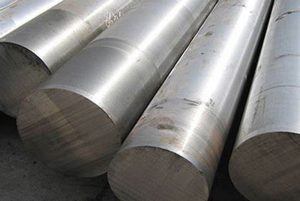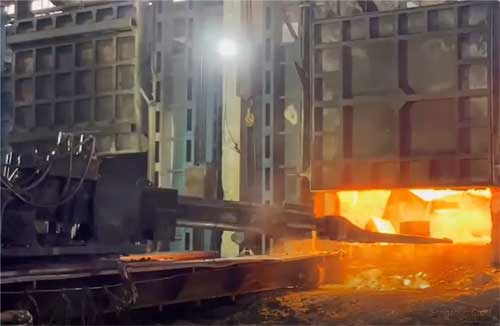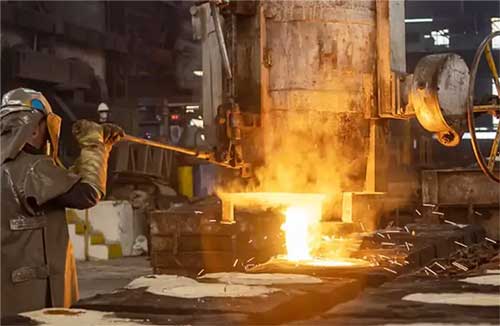Table of Contents
Introduction

M42 steel is a high-cobalt, high-speed steel known for its exceptional hardness, wear resistance, and red hardness at elevated temperatures. For industrial buyers, engineers, and manufacturing professionals, understanding the best machining practices for M42 steel is critical to optimize tool life, product quality, and production efficiency. This guide explores five proven tips for machining M42 steel, explains common challenges, and provides actionable recommendations to improve performance and reduce costs in industrial applications.
Why M42 Steel Machining Tips Matter for Industrial Buyers
Industrial buyers need to consider not only the material cost but also the total machining efficiency and durability of the tools used. M42 steel machining requires special considerations because of its high cobalt content, which gives it superior wear resistance but makes it more challenging to cut than standard high-speed steels. Proper tool selection, cutting parameters, and cooling strategies are key to ensuring consistent results.
Understanding M42 Steel Composition and Machinability
M42 steel contains approximately 8-10% cobalt, along with carbon, chromium, molybdenum, and vanadium. This composition provides excellent red hardness and wear resistance but reduces machinability to around 35-40% of conventional carbon steel. Understanding how these alloying elements affect cutting performance helps buyers choose the right tools and machining strategies.
Key Mechanical Properties of M42 Steel for Machining
- Hardness: Typically 68-70 HRC after heat treatment
- Wear resistance: Excellent due to cobalt content
- Red hardness: Maintains hardness at temperatures up to 600°C
- Toughness: Moderate, requiring careful handling during machining
5 Proven Machining Tips for M42 Steel

1. Select the Right Tool Material
Using carbide or coated carbide tools is recommended for M42 steel due to its high hardness and wear resistance. High-speed steel (HSS) tools may wear too quickly. Choosing the correct tool material directly impacts machining efficiency and tool life.
2. Optimize Cutting Parameters
Proper cutting speed, feed rate, and depth of cut are crucial. M42 steel requires slower cutting speeds than conventional steels, and feeds must be carefully balanced to avoid excessive tool wear or heat generation.
3. Use Effective Cooling and Lubrication
Coolants and lubricants reduce heat buildup and minimize tool wear. Flood coolant or high-pressure mist systems are often recommended for M42 steel to maintain dimensional accuracy and surface finish.
4. Preheat or Anneal the Steel When Necessary
Annealing M42 steel before machining can improve machinability by reducing hardness temporarily. This is especially helpful for complex components or when tight tolerances are required.
5. Monitor Tool Wear and Adjust Accordingly
Regularly inspecting cutting tools for wear ensures consistent quality. Adjusting machining parameters as tools wear can prevent surface defects and prolong tool life.
Table: Recommended Machining Parameters for M42 Steel
| Operation | Tool Material | Cutting Speed (m/min) | Feed Rate (mm/rev) | Depth of Cut (mm) | Coolant Type |
|---|---|---|---|---|---|
| Turning | Carbide | 20-25 | 0.05-0.15 | 0.5-2.0 | Flood Coolant |
| Milling | Carbide | 18-22 | 0.03-0.12 | 0.3-1.5 | High-Pressure Mist |
| Drilling | Carbide | 15-20 | 0.04-0.10 | 0.2-1.0 | Flood Coolant |
| Grinding | CBN Wheel | 30-40 | 0.01-0.05 | 0.1-0.5 | Minimal Coolant |
Common Challenges in M42 Steel Machining

Machining M42 steel presents several challenges, including rapid tool wear, heat generation, and work hardening. Choosing incorrect cutting parameters or tool materials can lead to surface defects, dimensional inaccuracies, and premature tool failure.
Effects of Work Hardening
M42 steel tends to harden locally during cutting, increasing tool wear. Reducing cutting speed and using appropriate lubricants helps mitigate work hardening effects.
Surface Finish Considerations
Achieving a smooth surface finish requires careful selection of tool geometry, feed rates, and cooling strategy. Cold working and repeated cuts may be necessary for precision parts.
Dimensional Accuracy and Tolerances
Maintaining tight tolerances is challenging due to heat expansion and material hardness. Monitoring tool wear and using precision fixturing can improve consistency.
Best Practices for Machining M42 Steel Components
- Use coated carbide tools for all primary operations.
- Apply flood or mist coolant to reduce heat and prevent thermal cracks.
- Pre-anneal high-hardness stock before complex machining.
- Monitor tool wear continuously and adjust parameters proactively.
- Implement multi-pass cutting to reduce stress and improve surface finish.
Conclusion
Machining M42 steel is more demanding than conventional steels due to its high cobalt content and superior hardness. However, by selecting the right tools, optimizing cutting parameters, applying effective cooling, and monitoring tool wear, industrial buyers can achieve high-quality results while maximizing productivity and minimizing costs. Following these five proven tips ensures that components made from M42 steel maintain durability, precision, and surface integrity throughout their application.
FAQ
What are the main challenges when machining M42 steel?
The main challenges include rapid tool wear, heat generation, work hardening, and difficulty achieving tight tolerances. Choosing proper cutting tools and parameters mitigates these issues.
Which tool materials are recommended for M42 steel?
Carbide and coated carbide tools are preferred due to their ability to withstand high hardness and reduce wear. HSS tools are less effective and wear quickly.
How does coolant help in M42 steel machining?
Coolants reduce heat buildup, minimize tool wear, and maintain dimensional accuracy. Flood coolant or high-pressure mist systems are commonly used for effective cooling.
Is preheating or annealing necessary for M42 steel?
Annealing is recommended for complex components or tight-tolerance parts, as it temporarily reduces hardness and improves machinability.
How often should tools be inspected during machining?
Tools should be regularly monitored for wear. Adjusting cutting parameters and replacing worn tools prevents surface defects and maintains consistent part quality.
What industries commonly use M42 steel components?
Industries such as automotive, aerospace, tooling, and high-precision manufacturing commonly use M42 steel for drills, milling cutters, taps, and other cutting tools.

If you enjoyed this blog on mechanical parts processing, don’t forget to join me on social media for more insights, updates, and community discussions.
📘 Facebook – Connect with me here
Let’s keep exploring, learning, and growing together. Thanks for reading, and see you in the next post! 🚀

